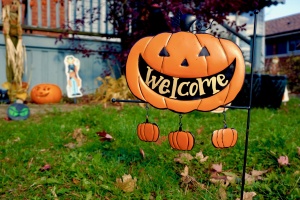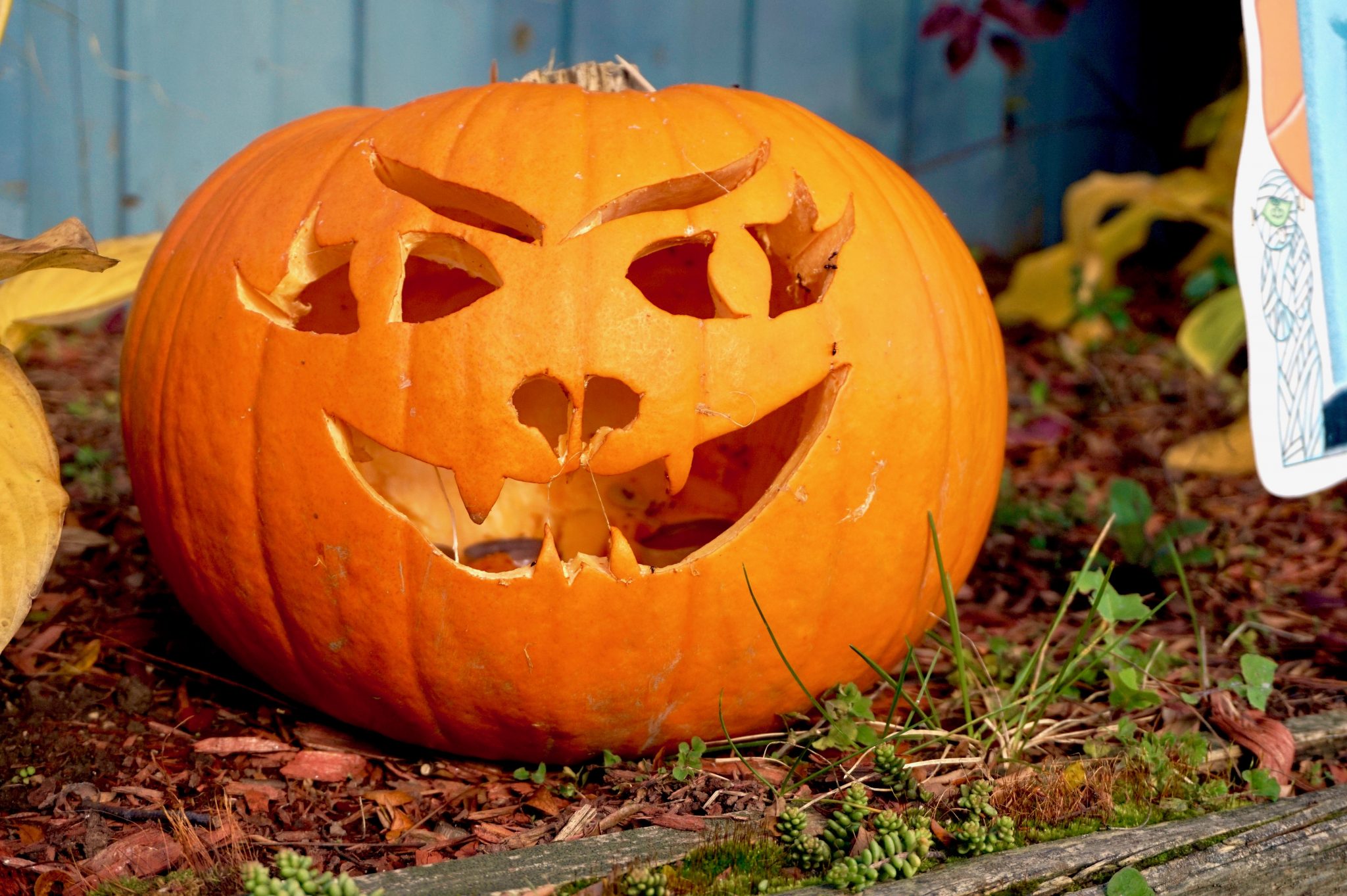PHOTO CONTRIBUTED BY MOLLY SIMPSON / SPUTNIK PHOTOGRAPHY
With October coming to a close, the streets go dark as it’s last night sets in, the streets run crooked with tall mischievous trees looking beneath as they stand guard for houses decorated in the stuff of nightmares.
Skeletons, hanging ghosts and burning pumpkins with devil eyes, fake blood drips and spooky brooms rest adorned by the witch’s hat. Inside some homes, a party of dark wonder riles as superheroes and villains dance alongside famous icons, rooms go black with a single screen scaring its viewers with horror flicks and doors will soon knock as little nightmares ask the ultimate question, trick or treat.
This may not be the most accurate picture of Halloween in 2021 – COVID sends its regards – but beyond that, this is what one can expect during this time of year. Halloween is one of the most famous festivities of the year, second to only Christmas in terms of commercial success.
In Canada and the United States, Halloween is big and it is now embedded within their respective national identities, but Halloween’s hunger for domination doesn’t stop there. In fact, it has launched a global campaign taking over the world.
From Japan, to Mexico, to Britain, almost everyone seems to be embracing this celebration. All the continents of the world have been overcome as children in South America run around the streets asking for treats.
In Asia, Shibuya district is swarmed with men and women dressed in costumes. In Europe, pumpkins are sold out as the fear of Stingy Jack sets them alight. Halloween’s conquest only grows stronger, so the question is posed: is this a good thing?

In Japan, there are some conservative groups that stand guard trying to resist this conquest, as they claim it has brought nothing but noise and mess to the generally ecologically clean and green state. The celebration greatly inverts the country’s cultural norms as their usually clean un-littered streets are swarmed with the aftermath of costume parties citywide.
That’s just the beginning. Soon they’ll get kids to start knocking on stranger’s doors demanding candy, something the Japanese find very ‘’uncivilised’’. The resistance turns global as even more conservatives speak up, with discussions on how the very commercialized festivity promotes global capitalism and taints local culture.
Many religious backgrounds place a great deal of respect when it comes to the dead, ancestors and deceased loved ones. They are to be honoured, not paraded and appropriated with the sole goal of scaring people. This is observed in cultural celebrations like Dia de los Muertos in Mexico.
In Halloween’s global exportation, it has fused itself with local traditions and celebrations and from a certain perspective, many see this as perverting the tradition, tainting its purity. Due to Halloween’s close ties to North America, one could even call its domination, Americanization.
Americanization even affects western countries. For example in Europe, stingy Jack used to be traditionally scared off with turnip lanterns. Due to the prevailing canon of the Pumpkin, the local tradition has been usurped with the more internationalized or Americanised pumpkin tradition.
These arguments show that cultural exportation is truly contentious ground, but ultimately, this is merely an argument, one side of the coin. The other side is steeped in Halloween’s very own history. Halloween is not as American as we might think it to be, its true origins are vague but great evidence points to the celebration finding its roots in Celtic culture.
The festival of Samhain, which was celebrated around the end of October, was a time when the division between the living and the dead was thinnest. The souls of the dead, ghosts, demons and fairies supposedly walked among the living. Due to this, people would wear costumes in order to disguise themselves and scare off evil spirits, a number of Morden traditions like trick or treating and the general spookiness of the event find their roots here.
This tradition was appropriated by the Christians and became All Saints Day, or rather All Hallows’ eve. This is where Halloween gets its name. In this new tradition, people would dress up as their favourite Saints. These traditions would find fertile ground in the New World as Irish and Scottish immigrants continued to practice these traditions. The first children dressing up on Halloween had occurred in Vancouver B.C in 1898, the first trick or treat would occur later on in 1927, in Blackie, Alberta.
At the end of the second world war, America consolidated itself as a superpower bringing forth a new world order where capitalism and democracy invaded the world. Through cinema and literature, Halloween spread and now in the 21st century with entertainment behemoths like Disney and technological innovations like social media. American culture has almost become the default culture of the world recognized by almost everyone.
American culture is really made up of a thousand different cultures. North America and particularly Canada is a state of many states having been built by immigrants. They all came with their own perspectives and in today’s globalization, different cultures and traditions are being consumed by the world being twisted and remixed to fit into their respective societies.
Japan may celebrate Halloween, but it isn’t the same as the Halloween practiced in Canada or Britain, everyone has taken this celebration and made it their own, creating a hegemony of diversity. What this creates is a situation where Halloween isn’t taking over the world, but rather the world is taking over Halloween.
In conclusion, I am of the perspective of embracing rather than resisting, if there is something that can bring the world closer together, I’m all for it. Halloween means many things to many different people, but the most important thing is that it means something to all of us, it is an idea we all share and in today’s greatly divided world, the few things that unite us must reign on.




